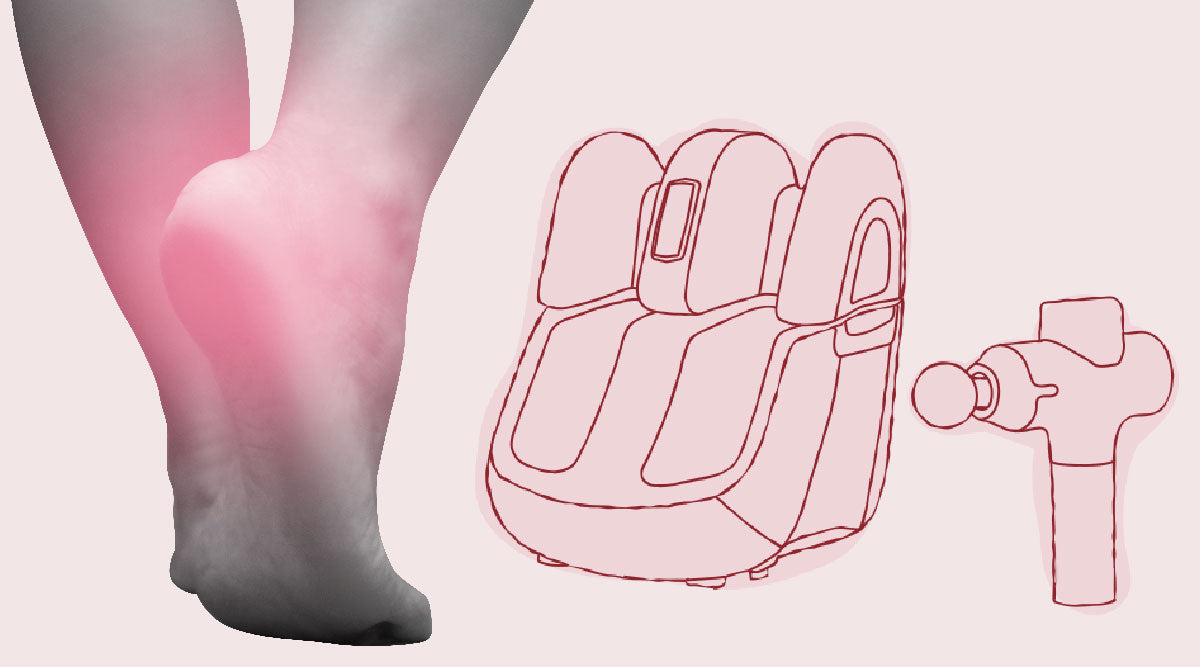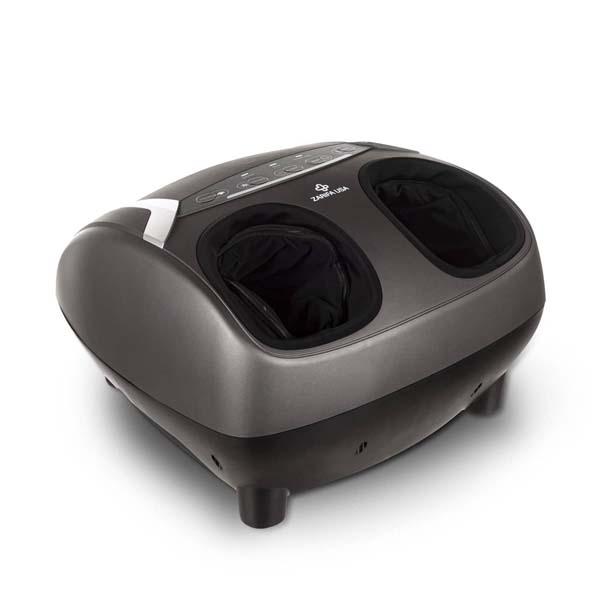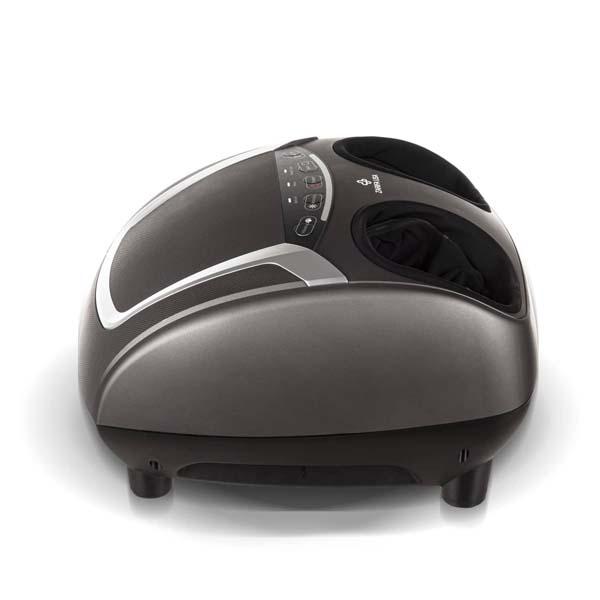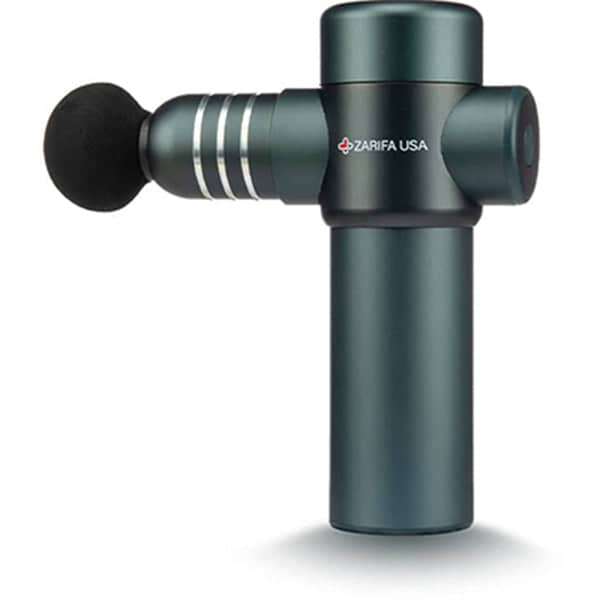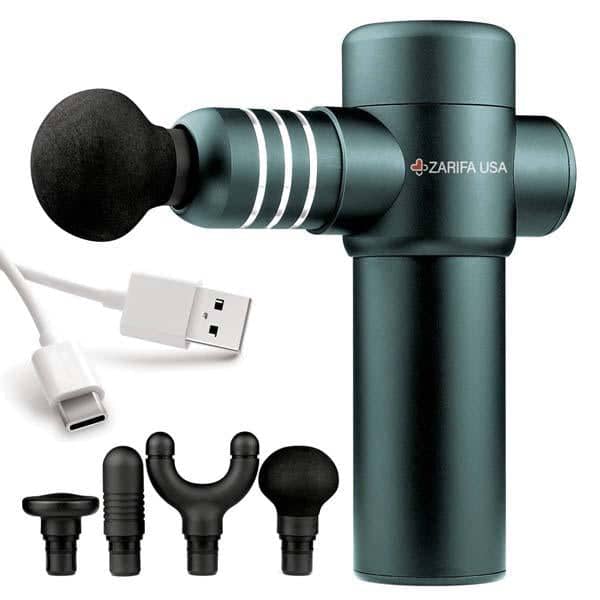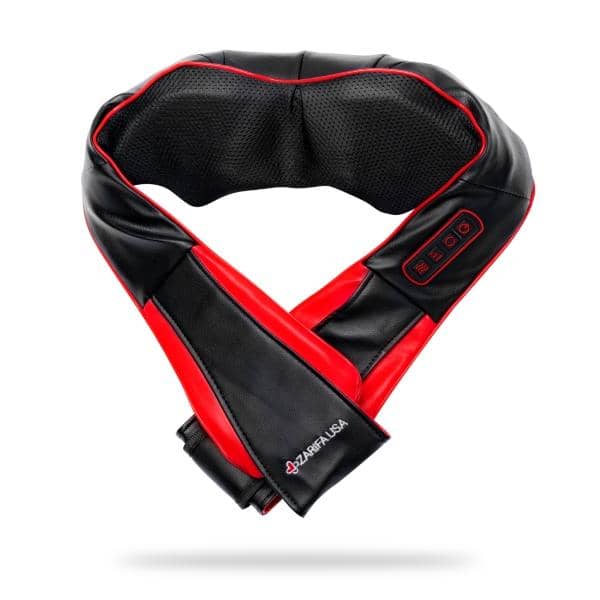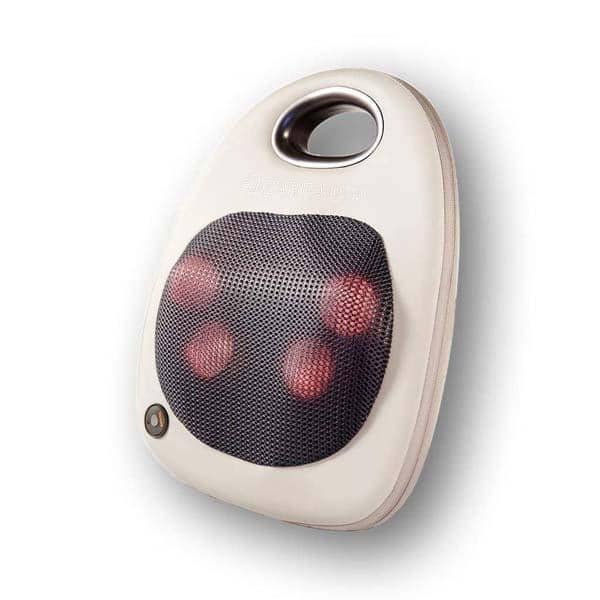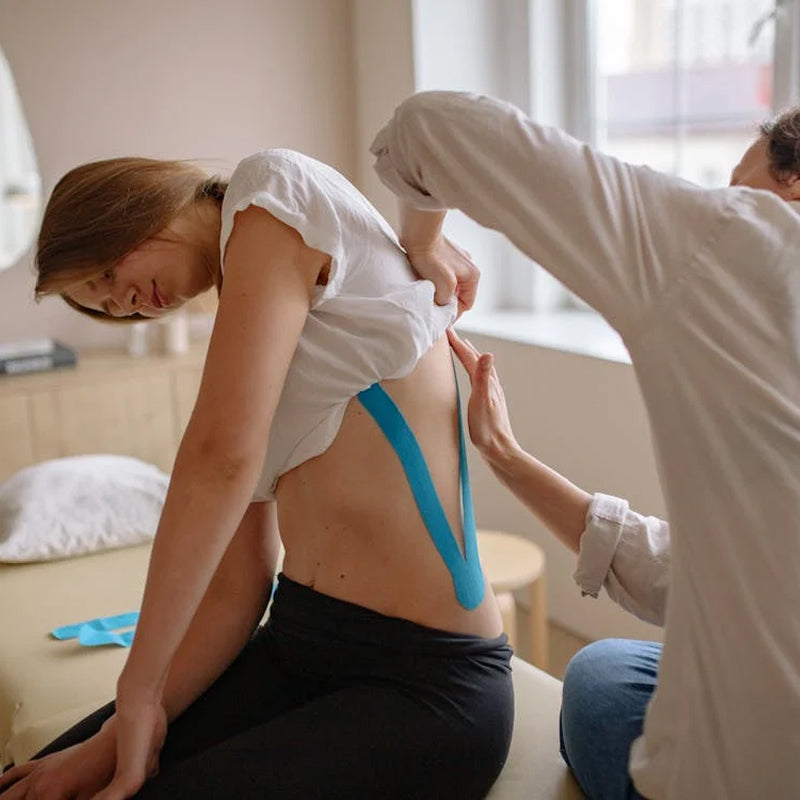According to the American Academy of Orthopaedic Surgeons (AAOS), an estimated two million people get treatment for plantar fasciitis every year. Recent analysis suggests that every 1 in 10 people develops this condition at some point in his/her life.
Like several other medical conditions ending in “itis,” plantar fasciitis is also characterized by inflammation of the tissue of the bottom of your feet. Tissue massage therapy can offer instant pain relief and promote healing in the plantar fascia allowing you to get back on your feet within no time.
In this article, we will explore the various causes, symptoms, risk factors, and home remedies for plantar fasciitis. We will also take a look at the vital care measures and preventive strategies that can help avoid such an uncomfortable condition. So, let’s see what plantar fasciitis is and how you can use foot massagers to manage its symptoms.

What is Plantar Fasciitis?
Research shows that plantar fasciitis accounts for almost 11 to 15 percent of foot symptoms that require treatment. When the arches and heels of your feet hurt on walking, especially the first thing in the morning, you may be suffering from plantar fasciitis.
Athletes, runners, people who are overweight, and workers who wear shoes with inadequate support are at a higher risk of developing plantar fasciitis. It commonly causes stabbing or shooting pain that occurs with your first steps in the morning. As you get out of your bed and move, the pain gradually decreases, but it might return after prolonged periods of standing.
What’s more, plantar fasciitis causes severe pain in the bottom of your heel especially when you stand up after sitting for a long time. The plantar fascia is a web like ligament that connects the front of your foot to your heel. It supports the arch of your foot and acts as a shock absorber, thus helping you walk smoothly.
Although the cause of the pain arising from plantar fasciitis is still unclear, a 2003 study suggested that the medical condition may involve degeneration rather than inflammation of the band-like fascia. Statistics show that plantar fasciitis is one of the most frequent orthopedic complaints.
The ligaments in your plantar fascia experience a lot of wear and tear in your daily routine. Excessive pressure on your feet can tear these ligaments. As a result, plantar fascia gets inflamed, and the inflammation gives rise to stiffness and heel pain.
Plantar Fasciitis Testing & Diagnosis
Searing heel pain that becomes worse with the first few steps in the morning is the main symptom of plantar fasciitis. Medical experts regard it as an unmistakable sign of the condition. If the heel pain does not get better after a few weeks, it's a good idea to get in touch with a podiatrist.
Depending on the severity of your condition, your doctor will perform a physical exam to look for tenderness in your foot and identify the exact location of the pain. This helps rule out the possibility of a different foot problem.
During the evaluation, your doctor may request you to flex your foot while he/she pushes on the plantar fascia to see if the pain gets severe as you flex and better as you stretch out your toe. He/she will also look for any redness or swelling and evaluate the strength of your muscles by checking your:
- muscle tone
- reflexes
- coordination
- sense of touch and sight
- balance
Furthermore, your doctor may order imaging tests to ensure that your heel pain is resulting from plantar fasciitis and not another problem. An X-ray or an MRI scan may be required to determine the exact underlying cause of your heel pain such as a bone fracture.
X-rays
X-rays provide clear and vivid images of your bones. They come in handy when ruling out other possible causes of heel pain, such as arthritis or fractures. Heel spurs, small, pointed overgrowths on the heel bone, can also be seen on an x-ray.
In fact, they are often visible on X-rays of people who do not have plantar fasciitis. Therefore, many researchers believe them to be an incidental finding.
The American Academy of Orthopaedic Surgeons states that one out of every 10 people has heel spurs. However, only 1 out of every 20 people with heel spurs has heel pain or any other debilitating medical condition.
Imaging Tests
Although magnetic resonance imaging (MRI) and ultrasound are not commonly used to diagnose plantar fasciitis, they may be ordered if the heel pain doesn’t go away after employing initial treatment methods.
Plantar Fasciitis Symptoms
Most patients with plantar fasciitis complain of pain at the bottom of the heel or sometimes at the inferior surface of the midfoot area. It usually affects a single foot, but it can also affect both feet. Pain from plantar fasciitis normally increases over time. It may be dull or sharp. Some people have reported feeling a burning sensation on the bottom of their feet radiating from the heel.
In most cases, the pain is worse at the start of the day when the person takes the first steps out of bed. It can also get worse if you walk after you’ve been sitting or lying down for some time. Moreover, climbing stairs can be quite difficult due to stiff and aching heels.
After extended periods of physical activity, the pain can flare up due to increased inflammation or irritation. Although shooting pain is the most commonly reported symptom of plantar fasciitis, it can also cause mild swelling in the heel. People with plantar fasciitis don’t feel any pain while performing the activity, but rather just after they stop.
Even though the pain can get quite intense after taking rest, it normally becomes mild during the day. However, it may reappear after moderate exercise or prolonged periods of standing. As mentioned earlier, plantar fascia is a thick band of connective tissue connecting the heel to the front of the foot.
This dense band of tissue supports the arch of the foot and acts like a bowstring on the bow, absorbing any stress placed on the feet.
Plantar Fasciitis Causes
Your plantar fascia has the shape of a bowstring that maintains the integrity of the arch of your foot and absorbs the strain when you walk. If tension on this bowstring becomes too great, small tears start appearing in the connective tissue band. Repetitive stretching can lead to more tearing and can inflame or irritate the fascia, although the underlying cause remains unclear in a lot of cases of plantar fasciitis.
Men and women belonging to the 40 to 60 age group are highly likely to experience this condition. However, according to a recent article in American Family Physician, the number of cases in women is slightly higher than that of men. Also, pregnant women often experience bouts of plantar fasciitis, specifically during late pregnancy.
It has a higher rate of incidence among athletes — especially runners. That is why it is also known as a runner's heel. In a retrospective study of running injuries, researchers found out that 7.8 percent of the cases involved plantar fasciitis, and it ranked as one of the five most commonly reported running injuries.
Furthermore, plantar fasciitis occurs when the band-like fascia becomes tight from too much tension on the connective tissue. That strain causes inflammation, which leads to stiffness and pain in heels. The condition develops and progresses over time, rather than being stimulated by a single injury.
Plantar Fasciitis Risk factors
Structural foot problems such as very flat feet or very high arches increase the risk of developing plantar fasciitis. Tight Achilles tendons, which are the tendons joining your heels to your calf muscles, may also give rise to plantar fascia pain. Wearing shoes with poor arch support and soft soles can also lead to plantar fasciitis.
Studies show that plantar fasciitis isn’t usually the result of heel spurs. Experts used to believe that heel spurs were the primary cause of pain in people with plantar fasciitis, but this isn’t the case. There are a number of risk factors that can raise your risk for plantar fasciitis. These include:
Age & Occupation
Aging has a considerable impact on the connective tissue band that maintains the curvature of the arch of your foot. As you grow older, the fibres start getting weaker and small tears keep developing. Moreover, factory workers, miners, and people who work on hard surfaces or keep standing for longer periods have a higher risk of developing plantar fasciitis.
Obesity or Sudden Weight Gain
Excess weight can degrade the plantar fascia, reducing its ability to absorb shock, which can result in heel pain. There also appears to be a strong linkage between plantar fasciitis in nonathletes and increased body mass index (BMI). Pregnancy also increases your risk by increasing the weight placed on your feet.
Too Much Pressure on the Heels
People who walk frequently or keep standing all day at work tend to be at a greater risk. Walking or standing for prolonged periods during your workday, such as in the case of factory workers and teachers, can debilitate the plantar fascia. Apart from that, research has proved that excessive tightness or stretching of the Achilles tendon can result in overstraining of the connective tissue.
Foot Shape and Gait
Recent research shows that people with flat feet (also known as low arches) or overpronation (rolling inward on your arches when you walk) are at a higher risk for plantar fasciitis because the complete soles of their feet have a greater chance of touching the ground when standing.
Similarly, very high arches (cavus foot) also increase your risk because an excessive amount of pressure is applied on the heel of the foot when walking or standing. Lastly, an unusual or abnormal running or walking gait can also raise the pressure and tension on the connective tissue band.
Arthritis
Although scientists haven’t yet established a direct link between plantar fasciitis and arthritis, people with limitations in foot and ankle joint mobility due to arthritis may face a higher risk of developing discomforting conditions like plantar fasciitis.
Diabetes
Recent scientific research has shown that people with type 2 diabetes may have higher chances of developing a thicker plantar fascia during their growth. This is particularly true for people with a higher BMI.
In a systematic review published in the journal Diabetes, Metabolic Syndrome and Obesity: Targets and Therapy, researchers concluded that common comorbidities, including sedentary lifestyle and obesity, are probably the factors that increase the risk of plantar fasciitis for diabetic individuals.
Wearing the Wrong Shoes
If your shoes don't fit well, they won't provide full support to your feet. Uncomfortable footwear can impair your ability to walk properly. It may also put additional stress on the fascia. Running shoes, for instance, lose a significant amount of their absorption capacity with time. Simply replacing your worn out shoes with a comfy new pair may help reduce pain.
Treatment for Plantar Fasciitis
There are various treatment modalities for getting rid of plantar fasciitis. Most cases of plantar fasciitis can be treated at home by applying ice and taking rest. Over-the-counter pain relievers like ibuprofen (Advil, Motrin B) can also help reduce the pain, irritation, and inflammation associated with the condition. What’s more, orthotics or shoe inserts that provide support and reduce pressure on the foot, can also mitigate pain for short periods.
Surgery Options for Plantar Fasciitis
If the pain doesn’t go away even after several months of reducing activity, increasing stretching, and making other lifestyle changes, your doctor may recommend an invasive procedure like ultrasonic tissue repair, surgery, and extracorporeal shockwave therapy.
Complementary Therapy Options for Plantar Fasciitis
Apart from conventional treatment methods, acupuncture, a traditional treatment modality commonly used in ancient Chinese medicine, may also serve as an effective treatment option for people with plantar fasciitis.
Acupuncture and massage therapy are often used to lower pain and involve the insertion of thin needles through specific points in your body to redirect and regulate the flow of energy. Recent evidence suggests that stimulating the muscles, nerves, and connective tissue in specific areas of the body helps boost the natural pain-relieving process.
Foot Massager
As already discussed, a foot massager can help with chronic pain by boosting blood circulation and releasing tightness. The contraction of your band-like fascia reduces blood flow in the area but massaging it a little allows oxygen to rush in and toxins to be flushed out.
You can stretch your plantar fascia by massaging your foot gently and break up the tension within its fibres. Foot massagers for plantar fasciitis are the best option to help relieve chronic pain and heal from plantar fasciitis. They are highly durable and available at an affordable price.
Exercise
Stretching and strengthening exercises can speed up your recovery process and help avoid future complications. It eliminates the risk of tightness or weakness of the other foot muscles. A physical therapist can teach you how to stretch and loosen your plantar fascia. You can also use other exercises to strengthen your lower body muscles.
Stretches for Plantar Fasciitis
A standing calf stretch with your toes on the wall is surely one of the best stretches you can perform to facilitate the recovery process and help prevent the medical condition from coming back.
- To do it, prop your toes against a wall so your legs are straight, and step one foot back.
- Keeping both legs straight, gently push your body toward the wall so you feel a stretch in your front foot and calf.
- Hold for 30 to 60 seconds.
- Switch sides and keep performing two or three times per side.
According to Quirolgico, another effective calf stretch is the runner’s stretch.
- To do it, start standing in front of a wall at arm’s length from it with your feet hip-width apart.
- Place both hands flat against the wall and bend one knee.
- Step the other foot back so your leg is straight, heel flat on the ground.
- Keep both feet pointed forward and gently press into the wall until you feel a stretch in your back calf and heel.
- Hold for 30 to 60 seconds and perform two or three times per side.
- Stretch out your calves both before and after exercise.
Home Remedies for Plantar Fasciitis
Alleviating pain, irritation, or inflammation in the plantar fascia ligament is a crucial part of the treatment. However, this doesn’t address or concern the underlying damage to the ligament.
Initial home treatment includes taking rest and applying ice for 15 to 20 minutes, three or four times per day to minimize swelling. You can also try changing your exercise activities. Replacing worn-out athletic footwear, wearing arch supports in your shoes, and sticking to stretching exercises may also play an important role in relieving pain.
Nonsteroidal anti-inflammatory drugs (NSAIDs), such as ibuprofen (Motrin or Advil) and naproxen (Aleve), may soothe pain in the plantar fascia ligament temporarily.
Braces and Supports
Night splints are another home remedy that can help stretch the arch of your foot. Night splints are a type of brace that lengthens the plantar fascia and Achilles tendon overnight by holding your foot in a flexed position. This can prevent morning ache and stiffness.
Apart from that, a boot cast may reduce strain by immobilizing your foot and allowing the plantar fascia to heal. You can also remove the boot cast for bathing. Carefully following the precautions and recommendations is often enough to cure plantar fasciitis without getting help from your doctor.
Plantar Fasciitis Prevention
Here are the steps you can take to prevent plantar fasciitis.
- Warm up before doing exercise.
- Maintain a healthy weight to keep your heels free of excessive load.
- Increase running and other forms of high-impact exercise gradually.
- Choose shoes that fully support your arch and provide a cushioning effect to your heel.
If you’re a runner, make sure that you update your running shoes regularly. One of the best ways to prevent plantar fasciitis is to stretch your calves regularly. Consider working with a physiotherapist to ascertain muscle weaknesses or mobility issues. Weakness in areas such as the hip and ankle can cause changes in the foot too.
Plantar Fasciitis Diet
Despite the evidence available regarding the efficacy of proper nutrition, more research is needed to improve or prevent plantar fasciitis. However, taking these supplements may help with tissue repair and healing:
- vitamin C
- glucosamine
- bromelain
- zinc
- fish oil
It’s better to obtain nutrients from a balanced diet than to take supplements. Before you decide to take supplements, make sure you consult your doctor. If excessive weight caused your plantar fasciitis, eating a healthy diet can make you lose weight and get rid of your heel pain.
Plantar Fasciitis Complications
Plantar fasciitis requires treatment to stop it from getting worse. If left untreated, it can restrict mobility and keep you from getting exercise. It can also result in back problems, knee and hip problems, and other foot conditions.
In addition, treatment through corticosteroid injections can lead to plantar fascia tears, so medical experts have to weigh the potential risks against benefits. Surgery performed to treat plantar fasciitis can also lead to complications. Some patients continue to experience mild heel pain even after surgery, whereas others feel slight discomfort because of the scar tissue that formed as a result of the surgery. Other possible complications of surgery include infection, delayed healing, nerve problems, and neuroma.
Plantar Fasciitis in Children
Children, like adults, may develop plantar fasciitis from wearing unsupportive shoes or from the overuse of the ligaments. As the condition can worsen over time, it’s essential to see a doctor for accurate diagnosis and treatment.
You can ice your child’s heel to reduce any pain, irritation, or inflammation. Massaging the area lightly can also help it heal. Make sure your child rests and avoids running, jumping, and standing for long periods to help their foot heal.
When your child returns to their normal activities, remind them to do warm up exercises and stretches to keep the problem from returning. You should also make sure that they’re wearing properly fitting, supportive shoes.
Conclusion
All in all, plantar fasciitis is one of the most commonly reported causes of heel pain. It involves the inflammation of a thick band of tissue that runs throughout the length of the bottom of your foot and connects your toes to your heel bone (plantar fascia).
However, the good news is that there is a wide variety of foot massagers designed specifically to massage out the bottom of your feet and alleviate foot pain. With the amazing and innovative foot massagers for plantar fasciitis available on the market today, you can massage your feet much better than the traditional hand massage.

